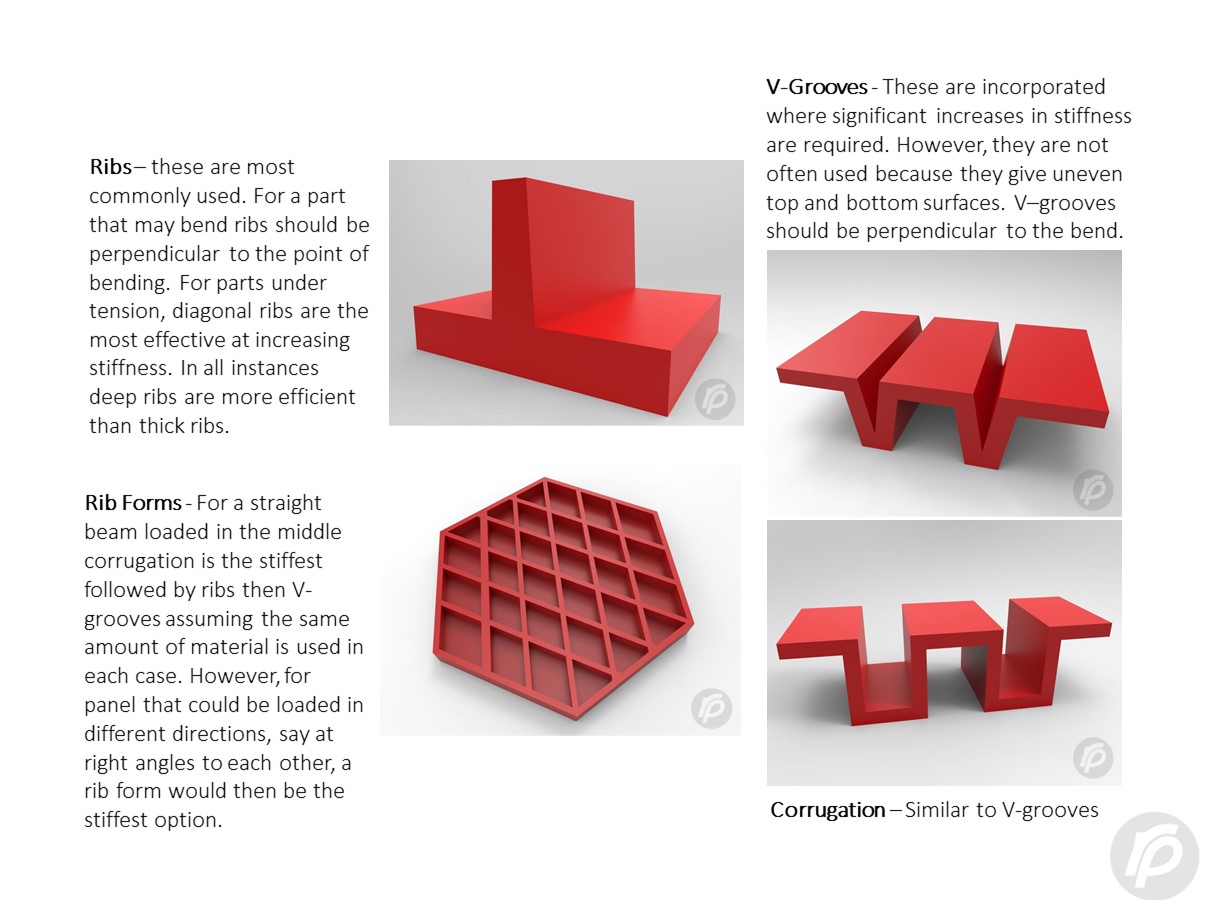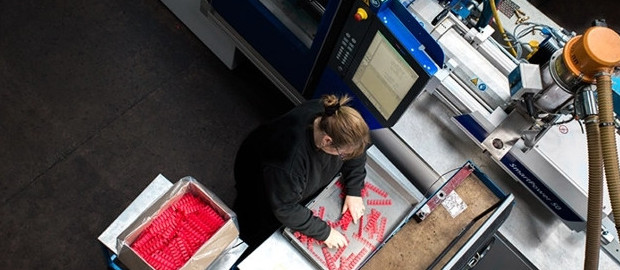DESIGN FOR STIFFNESS
When a part requires a certain degree of stiffness what needs to be considered are operating temperatures and length of time of the load. Also, is the load frequent or infrequent?
Related articles in this series:
Design for Appearance
Design for Economy
Design for Recyclability
Design for Time
Design Summary

Material selection is important, possibly filled material – talc, glass, etc. Stiffness is mainly increased in the direction of the glass fibres, so design with flow direction in mind.
DESIGN FEATURES

But, the design is also important. A key issue is whether the part is to be subjected to tensile or compression loading. For stiffness, ribs should be added not additional section. Think of steel girders with ‘I’ and ‘T’ sections which are almost as rigid as solid beams but at a fraction of the weight and cost. It is also necessary to consider how many ribs are required to achieve the desired result. Ribs should not be too close together, especially if they are deep, as this will make it difficult to cool the core that forms the rib pattern.
Side walls may be strengthened by the addition of buttress ribs. The same rules apply for conventional ribs as detailed below if sink marks on the outside of the part are to be avoided.
The use of ribs may result in surface blemishes (sink marks) which may be disguised in a variety of ways.
For information on rib design click here.
The use of ribs may result in surface blemishes (sink marks) which may be disguised in a variety of ways.
FURTHER READING OR LINKS TO ALL GUIDES?
- Design Guide
- Design Development
- Design For Appearance
- Design For Assembly 1
- Design For Assembly 2
- Design For Assembly 3
- Design For Cost Consideration
- Design For Economy
- Design For Mouldability 1
- Design For Mouldability 2
- Design For Mouldability 3
- Design For Precision
- Design For Recyclability
- Design For Stiffness
- Design For Strength
- Design For Time
- Design Summary
- Flame Retardancy
- Flexibility
Free design guide

"*" indicates required fields







